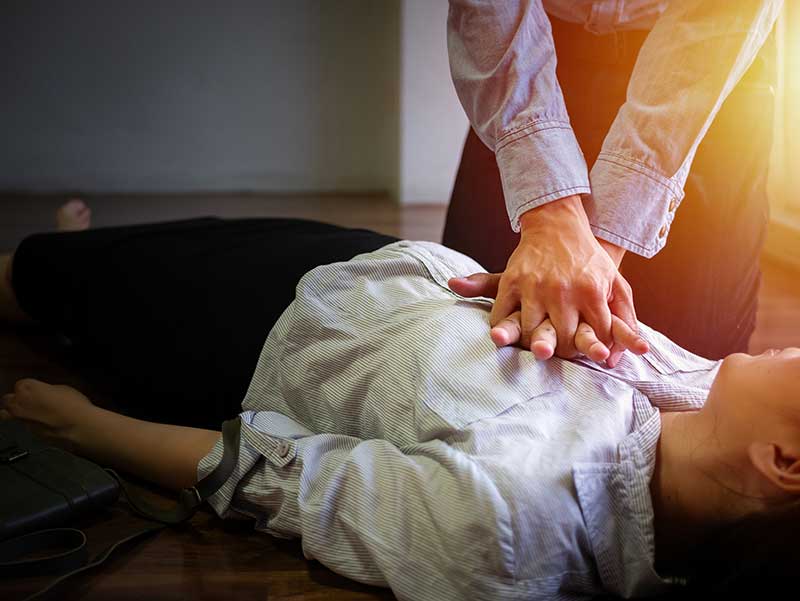Who gets CPR from bystanders? It depends if it’s a man or woman

Women are less likely than men to receive bystander CPR in public and far more likely to die afterward, research shows, and fears about inappropriate touching, accusations of sexual assault or concerns about causing injury may partly be to blame.
A 2018 study in the journal Circulation that analyzed 19,331 cardiac events between 2011 and 2015 found that 45% of men experiencing cardiac arrest received bystander CPR in public settings compared to just 39% of women. By the time men were discharged from the hospital, their odds of survival were 23% greater compared to women.
“CPR involves pushing on the chest, so that could make people less certain whether they can or should do CPR in public on women,” said Audrey Blewer, M.P.H., the study’s lead author and assistant director for educational programs at the Center for Resuscitation Science at the University of Pennsylvania in Philadelphia.
When the emergencies occurred at home, 35% of women and 36% of men received CPR. There was no significant statistical difference.
In a 2019 study published in the journal Circulation, a majority of respondents said the fear of being accused of sexual assault was a key factor contributing to the discrepancy: “Some people may be afraid of some kind of lawsuit, in particular a sexual lawsuit,” one woman responded. “They don’t want to chance having their life ruined just for trying to save someone else.”
The study also found the discrepancy may be due to women’s perceived fragility; respondents used words such as “fragile,” “weak” or “frail” in describing their fears of performing CPR on women. “Men are scared to do CPR on a woman because they risk breaking a rib,” one woman responded.
A third theme in respondents’ answers was poor recognition of cardiac arrest in women or an assumption that women are less likely to experience it than men. In separate research published this year in Cardiology, an online search of hundreds of free CPR-related videos revealed that 98.4% of them featured a man in cardiac arrest or a unisex manikin without female anatomy.
To raise awareness of the disparity and change perceptions about performing CPR on women, New York ad agency Joan Creative partnered with advocacy group The United State of Women in 2019 to introduce the Womanakin, a vest with silicon breasts that is designed to fit traditional manikins.
In October 2020, the American Heart Association issued updated CPR guidelines, calling for efforts to address gender-related barriers to improve bystander CPR rates for women.
“High-quality CPR can make the difference between who lives and who dies from cardiac arrest, and dedicated funding and efforts are needed to ensure that everyone who needs high-quality CPR receives it,” said Raina Merchant, M.D., M.S.H.P., FAHA, chair of the American Heart Association Emergency Cardiovascular Care Committee and associate professor of emergency medicine at the University of Pennsylvania.
Aside from CPR, disparities for men and women persist in health care, experts say.
“Studies have shown that gender disparities exist in cardiovascular disease, as well as response to time-sensitive conditions. To our knowledge, no study has examined whether gender variation exists with receipt of layperson bystander CPR,” Blewer said.
According to a 2016 study in the Journal of the American Heart Association, women are less likely to receive several different potentially life-saving procedures after cardiac arrest. That research showed women were less likely to receive coronary angiography, which can be used to look for blocked arteries; angioplasty, which is the repair or unblocking of an artery; or to have their body temperature lowered to increase the chance of survival reduce the risk of brain damage.
Some of the problems begin early in the process. While heart disease is the No. 1 killer of women, only one-third of all heart research subjects are women, even though genders exhibit different symptoms and reactions to medications, treatments and medical devices.
“As long as women are underrepresented in clinical trials, we will continue to lack data to make accurate clinical decisions on 51% of the world’s population,” the authors said in a 2016 women’s issue of Circulation: Cardiovascular Quality and Outcomes that drew attention to the issue.






